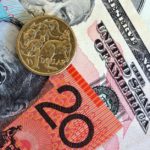Gold fell for a second day as the dollar further improved strength on its way to a seventh week of increases, before US payroll data.
Comex gold for delivery in February fell by 0.26% to $1 204.5 per troy ounce by 10:42 GMT, having shifted in a daily range of $1 206.7-$1 201.8 an ounce. The precious metal dropped 0.08% on Thursday to $1 207.7.
The U.S. non-farm payrolls report is closely observed by many traders as it is considered a measurement of economic strength. Should the report show above-expected data, the Federal Reserve could increase interest rates sooner rather than later and thus support the dollar and pressure the non-interest-bearing gold.
The report is expected to say that US employers increased the number of new jobs by 230 000 in November, according to surveys by Bloomberg and Reuters, up from the 214 000 last month. Unemployment rate should stay the same as the previous report at a multi-year low of 5.8%.
“Should tonights numbers exceed 230,000 it could send gold tumbling quickly,” said Howie Lee, an analyst at Phillip Futures, adding that a strong report “should set the tone for gold to languish below $1,200 for the rest of the year and leave gold to end the year in red territory,” with a support at $1 140.
During the past few months, strong US data and dollar, which hit a two-year high against the euro on Thursday, have pushed gold prices to 4 and 4-1/2 year lows as the precious metal also suffered from oil prices plunging to 5-year lows.
ECBs President Mario Draghi said on Thursday that the bank is delaying the decision on whether additional stimulus is needed until next year, which outlined that interest rates will not be pushed lower as of now. Mr. Draghi also said the council was discussing the possibility of purchasing “all assets but gold.”
The precious metal, held ground near the $1 200 mark, underpinned by sufficient physical demand by Asian consumers throughout the week. The Indian government removed a requirement for traders to export 20% of all gold imported into the country as a measure to battle a record current account deficit.
The US dollar index for settlement in December was up 0.08% at 88.810 at 10:45 GMT. The US currency gauge rose 0.29% on Thursday to 88.993, having earlier risen to 89.200, the highest since March 2009. A stronger greenback makes dollar-denominated commodities more expensive for holders of foreign currencies and curbs their appeal as an alternative investment.
Assets in the SPDR Gold Trust, the biggest bullion-backed ETF, holding remained unchanged at 720.02 tons on Thursday. The fund saw its first inflow in two weeks on Tuesday, jumping off a 6-year low of 717.63 tons on Monday.
Pivot Points
According to Binary Tribune’s daily analysis, February gold’s central pivot point on the Comex stands $1 207.4. If the contract breaks its first resistance level at $1 213.8, next barrier will be at $1 219.8. In case the second key resistance is broken, the precious metal may attempt to advance to $1 226.2.
If the contract manages to breach the S1 level at $1 201.4, it will next see support at $1 195.0. With this second key support broken, movement to the downside may extend to $1 189.0.





